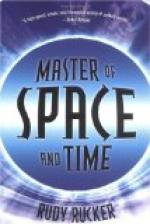Before this he had perfected an automatic telegraph, work on which had been begun by George Little, an Englishman. Little could make the apparatus effective only over a short line and attained no very great speed. Edison improved the apparatus until it transmitted thirty-five hundred words a minute between New York and Philadelphia. Such is the perfection to which Morse’s marvel has been brought in the hands of the most able of modern inventors.
VIII
TELEGRAPHING BENEATH THE SEA
Early Efforts at Underwater
Telegraphy—Cable Construction and
Experimentation—The
First Cables—The Atlantic Cable
Projected—Cyrus
W. Field Becomes Interested—Organizes Atlantic
Telegraph Company—Professor
Thomson as Scientific Adviser—His
Early Life and Attainments.
The idea of laying telegraph wires beneath the sea was discussed long before a practical telegraph for use on land had been attained. It is recorded that a Spaniard suggested submarine telegraphy in 1795. Experiments were conducted early in the nineteenth century with various materials in an effort to find a covering for the wires which would be both a non-conductor of electricity and impervious to water. An employee of the East India Company made an effort to lay a cable across the river Hugli as early as 1838. His method was to coat the wire with pitch inclose it in split rattan, and then wrap the whole with tarred yarn. Wheatstone discussed a Calais-Dover cable in 1840, but it remained for Morse to actually lay an experimental cable. We have already heard of his experiments in New York Harbor in 1842. His insulation was tarred hemp and India rubber. Wheatstone performed a similar experiment in the Bay of Swansea a few months later.
Perhaps the first practical submarine cable was laid by Ezra Cornell, one of Morse’s associates, in 1845. He laid twelve miles of cable in the Hudson River, connecting Fort Lee with New York City. The cable consisted of two cotton-covered wires inclosed in rubber, and the whole incased in a lead pipe. This cable was in use for several months until it was carried away by the ice in the winter of 1846.
These early experimenters found the greatest difficulty in incasing their wires in rubber, practical methods of working that substance being then unknown. The discovery of gutta-percha by a Scotch surveyor of the East India Company in 1842, and the invention of a machine for applying it to a wire, by Dr. Werner Siemens, proved a great aid to the cable-makers. These gutta-percha-covered wires were used for underground telegraphy both in England and on the Continent. Tests were made with such a cable for submarine work off Dover in 1849, and, proving successful, the first cable across the English Channel was laid the next year by John Watkins Brett. The cable was weighted with pieces of lead fastened on every hundred yards.




